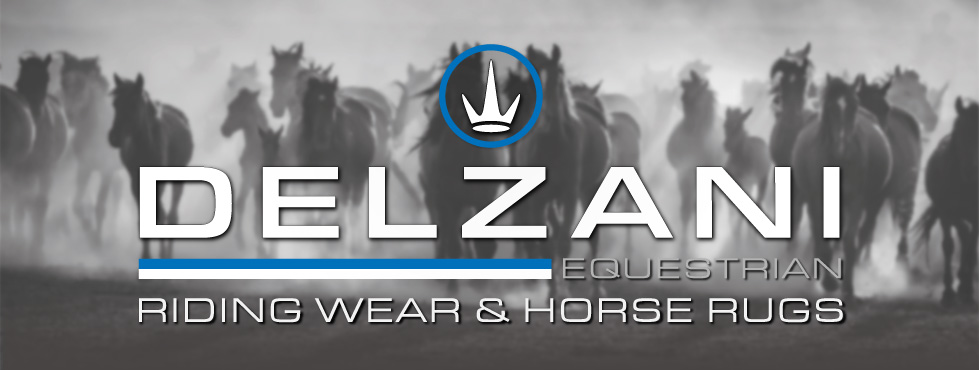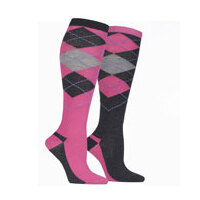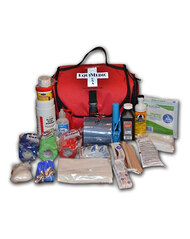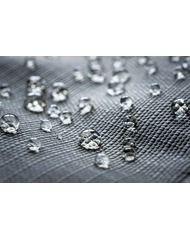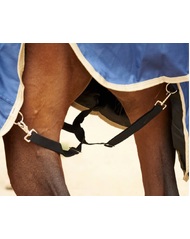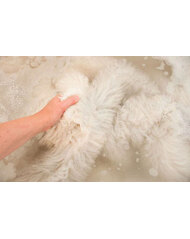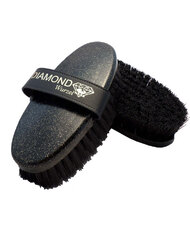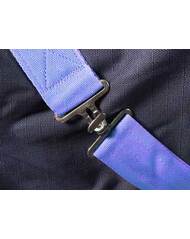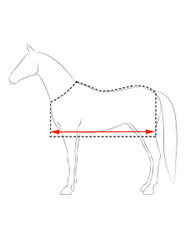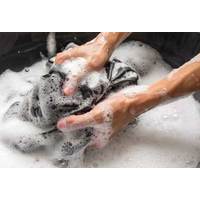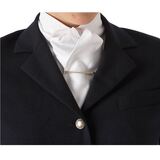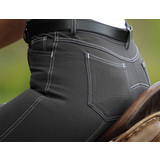How to maintain your saddlery leather
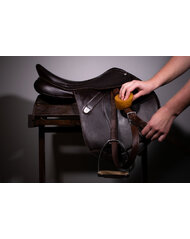
How to Maintain Your Saddlery Leather
Updated September 2025
A practical guide for Australian horse owners on how to clean, condition, and preserve saddlery leather - keeping tack soft, safe, and ready for every ride.
Purchasing a new Saddle and Bridle is a huge investment for any horse owner. But let’s be honest, cleaning tack is admittedly not something we like to spend our spare time engaged in, but it is necessary nonetheless and a little elbow grease will insure a much longer life from our saddle and bridles.
We have put together a few tips to help you navigate the shortest path to keeping your leather clean, soft and looking great.
How to tackle leather cleaning
Anytime leather comes in contact with the horse's skin or coat, it picks up dirt and perspiration. All most leather equipment typically needs for routine care is a wipe down with a damp cloth to remove dirt and perspiration after each ride and occasional (after 3-4 rides) and application of a suitable cleaning or a conditioning cream to keep the leather supple.
The body of the leather is preserved by keeping the surface clean because clean pores allow the leather to "breathe." Additionally, the surface may contain mould and mildew spores, which can rot leather.
Those of us who are a little long in the tooth may recall the days when saddle soap was our go to, but as technology has advanced, we now know glycerine saddle soap isn't necessarily the best choice. Neutral to acidic pH levels are ideal for leather. (The PH of glycerine saddle soap is alkaline.) The composition of leather is affected by a high pH (7 or above). They can leave a sticky residue, discolour leather, and remove tanning chemicals.
So priority number 1 is to always clean your tack with a neutral/pH-balanced product.
Simple Cleaning Tips:
• Use a damp cloth to sponge off mud and grease, then allow the leather to dry naturally before applying a good quality cleaner. Apply the cleanser to a dampened sponge or cloth, work up a lather, and scrub the leather's surface.
• Clean both the grain and flesh sides of straps, and both sides of other leather parts like saddle flaps and fenders. Let dry at room temperature. Never ‘force-dry’ wet leather of any kind - this includes gloves, boots, or jackets.
• If you end up with mouldy leather, make sure you clean it outside to avoid spreading spores. Wipe off mould with a damp cloth, which should be soaked in boiling water with disinfectant if you plan to use it again, then treat the tack with a leather-specific mould inhibitor, and finally condition the leather.
Why do I need to condition Leather?
When leather is exposed to too much heat or moisture, it dries out. (Heat/sun, by melting the fat that forms part of the leather's fibres, while water dries the material as it evaporates. Regularly condition your leather before it becomes stiff and rigid.
Tack should be taken apart and conditioned thoroughly at least at the beginning of each season. This is an important part of safety maintenance, allowing you to check carefully for stitch rot and cracked or dry leather.
Conditioning products are typically are oil-based treatments, of either animal fat or vegetable oil origin and come in liquid, cream, spray, or gel form.
When to use Leather oils
Oil-based products hydrate the leather and keep it supple. On fresh or broken tack, oil used to be the preferred product. The majority of contemporary tack goes through several tanning and preparation processes, thus conditioning creams or ointments are preferred. These days, oil is best used to restore much older saddles and bridle work, occasionally on new saddles,on equipment that has been severely dried out, misused, or damaged.
- Clean both the grain and flesh sides of straps, and both sides of other leather parts like saddle flaps and fenders. Let dry at room temperature. Never ‘force-dry’ wet leather of any kind - this includes gloves, boots, or jackets
- Once the leather has dried (don’t dry in direct sunlight), apply the oil generously, especially to the 'rough' underside of the leather, using a cloth, small sponge or paint brush.
- With care, gently roll and bend the leather while applying oil with your hands, paying special attention to the areas where the leather curves to fit around fasteners or buckles.
- Be careful to just oil the leather ends of rubber reins because oil will destroy the glue holding the rubber to the reins. Avoid over-oiling reins, billet straps, stirrup leathers, and flash nose band straps since oil can cause leather to stretch. Use cautiously because extra oil may always be added because a little bit goes a long way.
When to use Leather Conditioners
Conditioner creams or balsams usually contain lanolin, beeswax, and so on, and may be used on a fairly regular basis. Conditioners are simply rubbed into clean, dry leather using your fingers or a soft cloth. Once leather is dry and cleaned, apply a leather conditioner. If the product disappears immediately, apply another layer. Then leave overnight and polish off the next day.
Nowadays, a conditioning cream works better for breaking in new leather tack than an oil does. The colour of the leather is less likely to be stripped by cream or ointment conditioners, which also provide a little "tackiness" to the leather (improving the rider's grip) and are easier to apply. They can be put anywhere on the saddle or bridle, but they should be applied with special care to the "rough," or underside, of all leather. On bridles, the rough is against the horse's head; on saddles, it is on the inside of the sweat flaps and underneath the stirrup bar flap
As a general rule, a conditioner should be used a few times a year, before storing tack, and after the tack has dried out, or after being wet. Leather will be ruined by ammonia, abrasive cleaners, bleach, and wax remover and never use baby oil.
Finally, the best way to keep tack as easy to clean as possible, is to clean it after every use - it might seem like hard work at the time, but it will make your life easier in the long run and keep the tack in the best possible condition, prolonging its life.
We have hand picked a range of the best leather cleaners and conditioners to assist you.
Written by Jane Griffiths - An experienced Australian horse owner and product developer with over three decades immersed in equestrian life. Jane has spent years refining horse rugs, tack, and riding apparel to better suit Australian climates. She has enjoyed countless weekends at gymkhanas, show jumping events, and pony club competitions with her daughter, and still loves hitting the trails with friends whenever she can. Her lifelong passion for horses and hands-on understanding of equine comfort continue to shape her practical, rider-first approach to horse care and product design.
Leave a comment
Related Equestrian Guides
Choosing the perfect horse riding sock
Learn what makes the best horse riding socks for Australian riders. From fabrics to fit, cushioning and durability, this guide explains how Delzani riding socks outperform everyday socks in comfort and performance.
Understanding Denier: The Key Differences Between 600D and 1200D Turnout Rugs
Confused about 600D vs 1200D horse rugs? Learn what denier really means, how it affects toughness (not warmth or waterproofing), and when to choose Delzani’s Waratah 600D rainsheets for lighter use or Wyndham 1200D rainsheets for maximum durability.
Essential Horse First Aid Supplies
Looking for reliable and effective horse first aid supplies? We offer a wide range of essential items to help keep your horse healthy and happy, including wound care, bandages, poultices, and more. Trust Delzani for all your horse first aid needs.
Understanding your horse rugs waterproofing
Learn how horse rug waterproofing and breathability really work, why membranes matter more than fabric, and how to test, care for, and choose rainsheets. Explore Delzani’s 600D Waratah and 1200D Wyndham rugs, built for tough Australian conditions.
Wash Guide - Sheepskin
Follow our care guide to get the the best advice on washing your sheepskin numnahs and saddle pads.
Wash Guide - Horse Rugs
To get the best life from your Delzani horse rug, taking a few simple washing precautions will go along way.
Horse Care, Health and Supplements
Looking for high-quality horse health care products and supplements? Check out Delzani's collection of horse first aid, horse wormers, and shampoos along with an extensive range of grooming brushes all specially designed to keep your horse in top shape.
How to fit & adjust horse rug belly surcingles
Belly surcingles keep horse rugs secure, but only if fitted correctly. We answer common questions on what surcingles do, why they matter, and how proper adjustment ensures comfort, safety, and longer rug life for horses in Australian conditions.
Delzani Horse Rug Sizing Guide
We have put together this comprehensive guide to help you purchase the ideal size Delzani horse rug.
Equestrian Breeches & Tights - Washing Guide
Care for your breeches the way you care for your horse — with precision, patience, and pride. The right wash routine keeps your Delzani riding tights and breeches performing beautifully, ride after ride.
How to tie a Dressage Stock tie
Need help with your Dressage Stock Tie? Try our easy 6 steps to have you knotting a perfect Dressage Stock in no time!
Dress for Success - Showjumping Dress Code
Understanding exactly what is and isn’t permitted in regard to dress standards for Showjumping competitors can be very helpful when putting your competition wardrobe together.
Dress for Success - Dressage Dress Code
Want to look your best at your next Dressage Event but not sure what the rules are? Understanding exactly what is and isn’t permitted in regard to dress standards for dressage riders can be very helpful when putting your competition wardrobe together.
The Ultimate Guide to Equestrian Breeches & Jodhpurs: Classic Fit vs Stretch Fit Explained
At Delzani - we pride ourselves on the careful in house selection and development of our premium breech and tights fabric blends. Each fabric has been researched and custom made to meet our requirements and the needs of Australian equestrian riders.
Riding Shirts - Washing & Care Guide
Delzani equestrian shirts are made to be worn, not worshiped. Throw horses into the mix and this means they get dirty. However, with proper care, your new equestrian show shirt can last for several years and continue to look great.
A guide to seat grips on our Breeches & Tights
It is interesting to learn how silicone is applied to breeches. Silicone is applied much like screen printing and there can be anywhere from 3 to 10 layers - building up the silicone. The number of layers affects the long-term quality.

